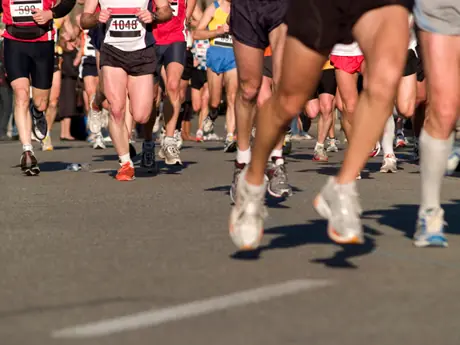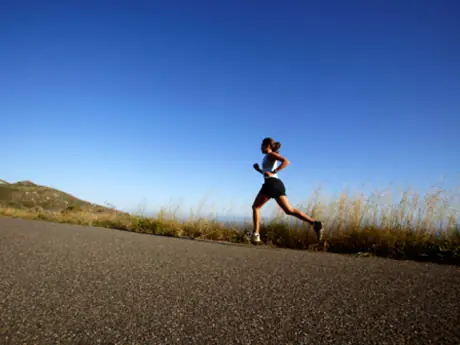“The main thing is how people can learn to ignore some of the social constraints that say someone that age shouldn’t be doing that,” says Michael Joyner, a physician and scientist at the Mayo Clinic in Rochester, MN, who studies the physiology of human performance. “Just keep doing it.”
Indeed, a study from the University of New Mexico showed as much as 70 percent of age-related decline is because of deconditioning rather than the aging process itself, lending scientific support to Christopher McDougall’s oft-quoted proverb that “you don’t stop running because you get old, you get old because you stop running.”
Masters runners, particularly those 60 and older, now represent the fastest-growing age group in races nationwide. According to Running USA, nearly 6 million people who completed a road race in 2010 were 40 or older. That number was about 140,000 in 1976.
These older athletes are also getting faster: The average finishing time for runners over age 60 has dropped by more than 16 minutes for women and 7 minutes for men. And Romuald Lepers a, sports scientists at the University of Burgundy in France, told The New York Times that “older runners have probably not yet reached their limits in marathon performance.”
Part of the unprecedented success of older runners is simply a population increase, Joyner says. When more people do something, there’s a greater chance more of them will be good at it.
“It’s not magic,” he says. “It’s just that more people will be attempting it, and the odds of a good person have good day on that day are going to be greater.”
"We’ll see older people continue to thrive in endurance sports, and we will see records continue to be broken."
Consider Jack Foster of New Zealand, who held records at several distances, including a 2:11:18 marathon that stood as a masters mark for 16 years, and a 2:20:28 at age 50 that earned him the nickname, “The Ancient Marathoner.”
During an ultra-endurance race last month in Manchester, Tenn., 81-year-old Bill Dodson completed 125 miles, while Dan Baglione, 85, ran 102.
Performances like these are exceptional, but they’re clearly not impossible. And they’re only the beginning of the trend.
“You’ve got to be brave and tough, and you’ve got to be in shape. But there’s no reason that this can’t continue,” Joyner says. “And, in fact, we’re going to see more and more of it. We’ll see older people continue to thrive in endurance sports, and we will see records continue to be broken.”
Can running keep you young?
There is a caveat here, of course: Just because more older athletes are finding success doesn’t mean it’s easy, or that anyone can do it. Biology is working against you, after all.
“The main thing that happens to older runners is their VO2 max starts to drop,” Joyner says. “If you train like a nut with really high-intensity training, those workouts … can keep your VO2 max high for as long as possible. You can reduce the rate of decline by as much as half per decade. Your maximum cardiac output will eventually start to fall, but we don’t really know where this is. Will it be as high as 50? I doubt it, but we can see it creep up a year or two in the next decade.”
Intense training also teaches you how to calibrate your effort and learn what small changes you may need to make to find marginal gains.
And that’s where many older athletes begin to fall away. As people age, Joyner says, “they don’t want to train two hours a day anymore, or injuries catch up to them. But if you look at athletes who stay at the elite level for many years, they continue to train hard and do what’s required to remain really good.”
- 2
- of
- 4
Get ACTIVE on the Go


Couch to 5K®
The best way to get new runners off the couch and across the finish line of their first 5K.
Available for iOS | Android







Discuss This Article